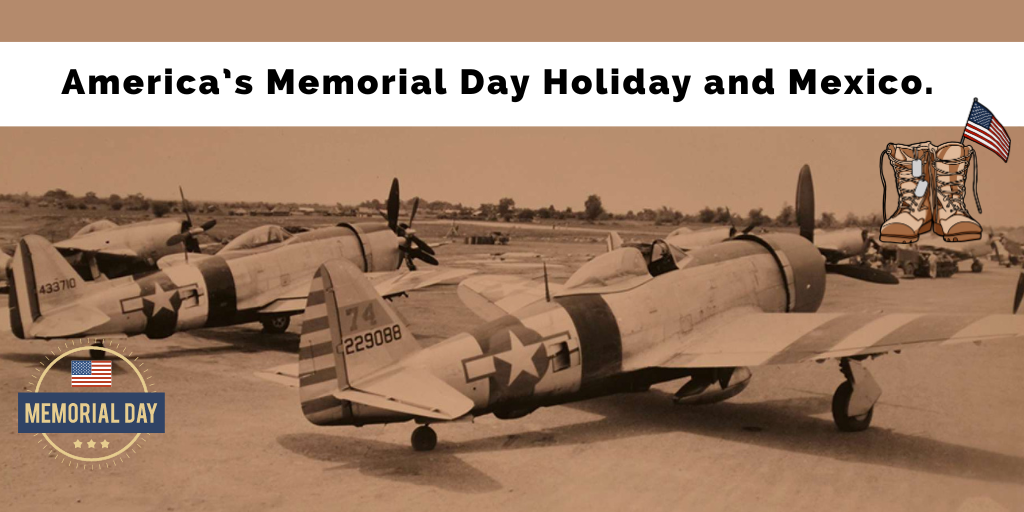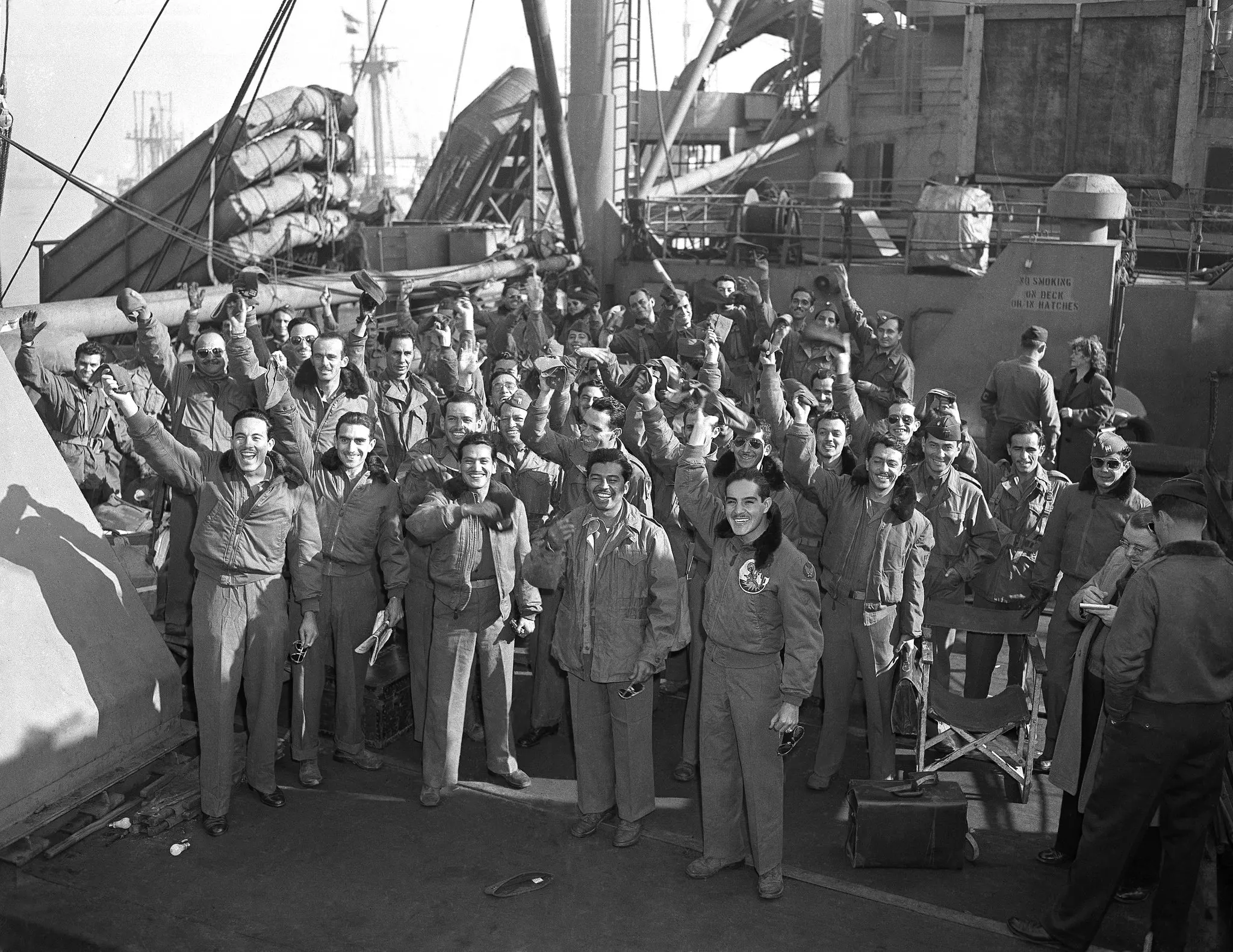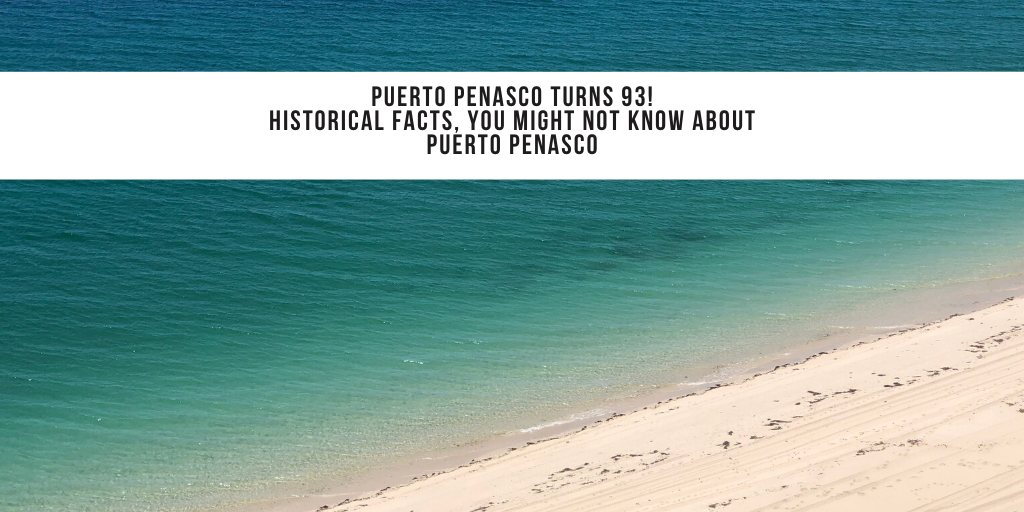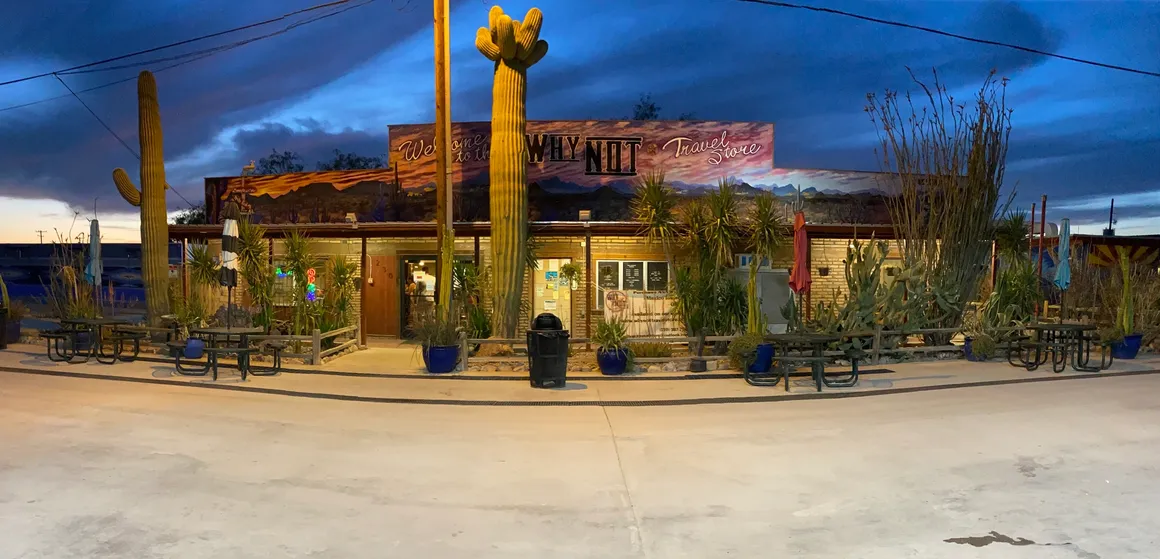May is here and the weather is awesome in the Sea of Cortez, which means it’s time for the United States to come down and party for Memorial Day weekend! In honor of Memorial Day, I did some digging into a local legend about Benito Juarez Highway being used as an airstrip during WWII. I didn’t find much evidence to support it, but I did learn some cool stuff about how Mexico helped the US in the war effort.
I admit, Benito Juarez, Highway 8, which is our main road into town, does resemble an airstrip on a map, so I scoured the web for information and asked several residents of Puerto Peñasco if they could provide any facts.
A special thank you to Erik Berg, Southwest historian and writer, who has conducted several presentations in Ajo regarding their influence on World War II, Erik was generous enough to look at Google Maps with me to see if he could see airfields south of the border, and in Sonora, and chat about the possibility.
The discussion which was informative and interesting, did not turn up any facts about Benito Juarez ever being an airstrip or runway, Berg was a little skeptical that there would be any type of American airfield in Puerto Peñasco, however, our discussion did lead to the pilot training that went on just north of the Border in Arizona, and the special team of Mexican Pilots known by the nickname Águilas Aztecas or Aztec Eagles.
Just north of the border, Davis-Monthan was acquired by the United States military in 1940 to serve as a critical training base during World War II. The field was quickly expanded from 300 to 1,600 acres, with runways lengthened to accommodate the largest bombers in service. As a result, Davis-Monthan became a hub for bomber training, including the B-18 Bolo, B-24 Liberator, and B-29 Superfortress.
Marana Field, which opened in August 1942 and deactivated in September 1945, was the largest pilot training center globally, having trained about 10,000 flyers. Berg explained there are numerous remnants of small, short airstrips throughout Arizona, with all the pilot training, the trainees had space to practice.
Another fun fact, when the war ended, Davis-Monthan Air Force Base was chosen as the primary storage facility for decommissioned military aircraft because of Tucson’s dry climate and the abundance of available space. The national aircraft storage site, also known as the “Aircraft Boneyard,” was initially used to store mothballed B-29s and C-47s but later expanded to house all surplus military aircraft. Today, it remains a critical facility in the storage and preservation of retired military planes.
Gustavo Vázquez-Lozano tells the story of the Aztec Eagles, a Mexican fighter squadron, in his 2017 book “201st Squadron: The History of the Mexican Pilots Who Fought in World War II”. This extraordinary unit was Escuadrón Aéreo de Pelea 201; the Aztec Eagles. Consisting of 36 volunteer pilots and 264 ground personnel, these men served in the Pacific during the final months of combat with the Japanese. Trained in the United States, this special squadron fought alongside Allied forces against the Japanese. The 201st Squadron was made up of volunteers from different regions of Mexico who were determined to defend their country and their ally.
The Aztec Eagles flew many missions during World War II. One of their most significant achievements was during the liberation of the Philippines. The Aztec Eagles flew alongside the US Air Force and helped to bomb critical Japanese positions, which allowed the allied forces to advance. The Aztec Eagles’ actions helped to bring an end to the war. The Aztec Eagles were Mexico’s only military unit to ever engage in combat outside the country’s national borders.
Mexico did play an essential role in protecting its borders. In addition to sending pilots to Europe, Mexico also patrolled the Sea of Cortez. Mexico City believed that Japan posed a greater threat than Europe and intercepted a plan to invade the United States via the Sea of Cortez. The Sea of Cortez was the site of numerous German submarine attacks during the war. These attacks targeted allied ships transporting goods to and from the United States.
Mexico responded to this threat by deploying its navy to patrol the sea. The Mexican Navy conducted countless patrols and search operations to prevent German submarines from infiltrating the Gulf of California. Thanks to Mexico’s efforts, not a single allied vessel was lost in the Sea of Cortez.
Although the war did not affect Puerto Peñasco directly, it had a significant impact on the region as a whole. The USA also, needed a secure source of copper to build ammunition and other war materials. Copper mining in the nearby town of Cananea became essential to the American war effort.
Many residents had family members fighting in the war or knew people who were affected by the conflict. As a result, there was a sense of unity and solidarity among the town, as they supported and cared for one another during these difficult times. The war also led to increased immigration to the United States, as many people from Mexico moved north to find work in war-related industries.
So, as you’re enjoying your Memorial Day weekend festivities, take a moment to remember and honor the brave military men and women who gave their lives for their country. Happy Memorial Day!
Erik Berg is available for talks on Ghost Towns of the Second World War: Arizona’s Historic Military Sites and other Arizona history. Berg has been researching Arizona History for 25 years and is a wealth of knowledge. He can be contacted for history talks at his website: eberghistory.com
Pic 1: Check out these badass members of the 201st Fighter Squadron waving to the crowd in LA after returning from their mission against the Japanese. Associated Press
Pic 2: This is an awesome pic of Mexican and American planes side-by-side in the Philippines. You can even see the Mexican flag on the fighter’s wing! Courtesy National Archives





























